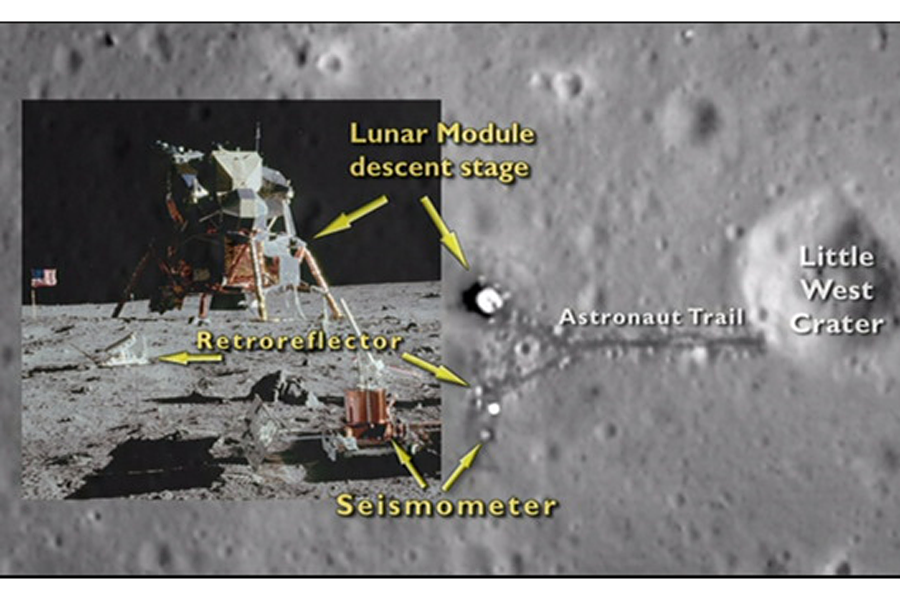NASA orbiter films Apollo 11 landing site
Loading...
What does the site of the first moon-landing look like 45 years later? A NASA probe orbiting the moon has recently beamed back new images of what Apollo 11's Tranquility Base looks like now.
An amazing new moon video created from data collected by NASA's Lunar Reconnaissance Orbiter gives space fans a new look at the Apollo 11 landing site years after astronauts Neil Armstrong and Buzz Aldrin left the moon's surface behind. The new video shows a 3D view of the landing site, and LRO also spied the trails made by the astronauts as they kicked up the lunar dust.
"Apollo 11 landed on the Moon on July 20th, 1969, a little after 4:00 in the afternoon Eastern Daylight Time," NASA officials wrote in a video description. "The Lunar Module, nicknamed Eagle and flown by Neil Armstrong and Edwin 'Buzz' Aldrin, touched down near the southern rim of the Sea of Tranquility, one of the large, dark basins that contribute to the Man in the Moon visible from Earth. Armstrong and Aldrin spent about two hours outside the LM setting up experiments and collecting samples." [Apollo 11 Moon Landing 45th Anniversary: Complete Coverage]
While the descent stage of the Eagle helped bring the astronauts safely down to the lunar surface, it remained on the moon after Aldrin and Armstrong lifted off to meet up with astronaut Michael Collins in orbit.
Animators used a 3D model of the lunar module for the video because in photos from an oblique angle, the lunar module appears flat, according to NASA.
Collins, Aldrin and Armstrong launched for the moon on July 16, 1969 from Florida. Aldrin and Armstrong descended to the lunar surface on July 20, and took their first steps on the moon that day. Armstrong was first out of the lunar module, with Aldrin following about 20 minutes later. Armstrong moved east of the Lunar Module to get a look at a small crater called Little West, NASA officials said. The astronaut's trail to the crater can be seen in the new video.
Aldrin and Armstrong spent 21.5 hours on the moon before blasting off to link up with Collins circling the natural satellite.
"Apollo 11 was the first of six increasingly ambitious crewed lunar landings," NASA officials said in the video description. "The exploration of the lunar surface by the Apollo astronauts, when combined with the wealth of remote sensing data now being returned by LRO, continues to inform our understanding of our nearest neighbor in space."
Follow Miriam Kramer @mirikramer and Google+. Follow us @Spacedotcom, Facebook and Google+. Original article on Space.com.
- Apollo 11 Moon Landing Site Spied By Orbiter | Video
- Latest Moon Photos from NASA's Lunar Reconnaissance Orbiter
- How the Apollo 11 Moon Landing Worked (Infographic)
- Space Station Salutes Apollo 11 45th Anniversary | Video
Copyright 2014 SPACE.com, a TechMediaNetwork company. All rights reserved. This material may not be published, broadcast, rewritten or redistributed.







